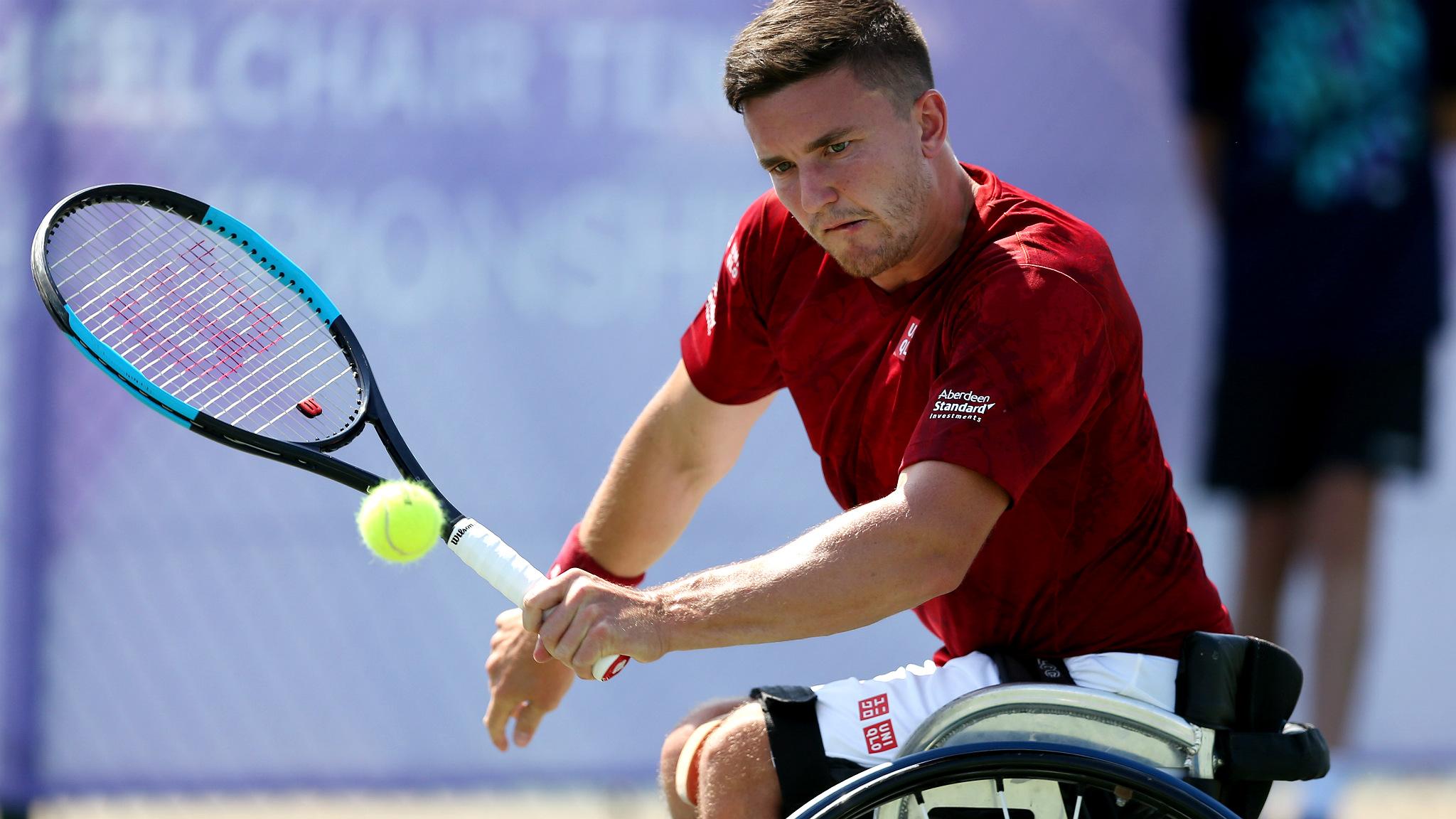Novak Djokovic & Rafael Nadal set for French Open quarter-final
- Published

Rafael Nadal and Novak Djokovic have met in a French Open quarter-final once before, back in 2006, when Djokovic retired with a back injury
Rafael Nadal and Novak Djokovic will meet in a French Open quarter-final on Wednesday that has had the tennis world fixated since the draw was made.
The nine-time champion up against the world number one; a man with one defeat in 10 years on Parisian clay against another unbeaten in 26 matches anywhere; one man going for a record 10th title and the other trying to complete the career Grand Slam.
They have met a record 43 times already, six times at Roland Garros and twice in the final, with Nadal holding the upper hand across the board.
But this year they meet four days before the final, on Nadal's 29th birthday, with Djokovic widely seen as the favourite.
Why so early?
Nadal managed a sheepish grin when Maria Sharapova put his name alongside that of Djokovic in the same quarter at the draw ceremony almost two weeks ago.
A possible quarter-final clash between the two had been the talk of Roland Garros.
BBC tennis correspondent Russell Fuller |
|---|
"Rafa Nadal against Novak Djokovic must be the most eagerly anticipated Grand Slam quarter-final in history. |
"Nadal has 70 French Open wins to fall back on, and Djokovic an unbeaten run at Grand Slam or Masters level which stretches all the way back to October." |
The Spaniard has faced a battle to stay healthy throughout his career and missed the final stages of 2014 with appendicitis, returning to action in the new year but taking time to rediscover his form.
Failure to land a title in the European clay-court season has seen him slip down the rankings to seventh, with a French Open seeding of sixth, leaving open the possibility of a testing quarter-final draw.
Step forward, Sharapova…
Who does it favour?
Djokovic and Nadal have met in a French Open quarter-final once before, back in 2006.
Nadal was then merely a one-time defending champion, already rampaging through the clay-court record books, while Djokovic was a highly touted, hugely talented but rather flaky world number 63.
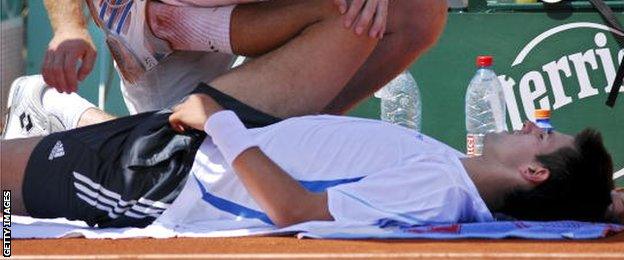
Novak Djokovic retired with a back injury the last time he faced Rafael Nadal in the French Open quarter-finals
The 19-year-old Serb retired with a back injury in the third set, and has since lost five more encounters with Nadal in Paris.
"I think it's a problem maybe for him to have Rafa in the quarters because how do you not at some point think, 'If I can just beat Rafa, I have a good chance of winning the French,'" said three-time champion Mats Wilander.
"I think for Rafa he's coming in with no pressure and if he wins nine or 10 championships, really in his mind does it matter that much? It only matters to us I think."
The form guide
It's hard to think of anyone in world sport with the kind of form that Djokovic can boast.
The Serb has won his last 26 matches, is unbeaten on clay in 2015 and has not lost a match at the Grand Slam or Masters level since Shanghai in October.
Nadal, on the other hand, has won just the relatively minor Buenos Aires title in the 12 months since he beat Djokovic in Paris, and lost to Djokovic, Fabio Fognini, Stan Wawrinka and Andy Murray on clay this spring.
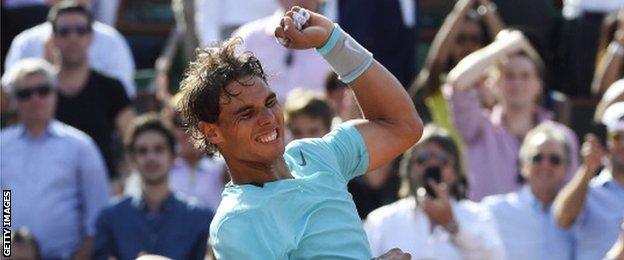
Rafael Nadal is unbeaten since 2009 at the French Open
However, the Majorcan can call upon maybe the greatest domination of a Grand Slam in tennis history, with 70 wins and just one defeat - to Robin Soderling in 2009 - over 10 years at Roland Garros.
"From what I've see it's not as clear-cut as when the tournament started, and that's mainly because Rafael Nadal is playing much better than I or anyone thought he was going to," said Wilander.
"What we've seen from Djokovic was expected. He's playing great, very solid, but he still needs to step it up against Nadal. It's going to be very, very interesting."
The crowd
Court Philippe Chatrier is no respecter of reputations and can be an unforgiving place.
Nadal has had his run-ins with the crowd over the course of 10 incredible years, while Djokovic has spent much of his career in the shadow of the Spaniard and Roger Federer, who is adored in Paris.
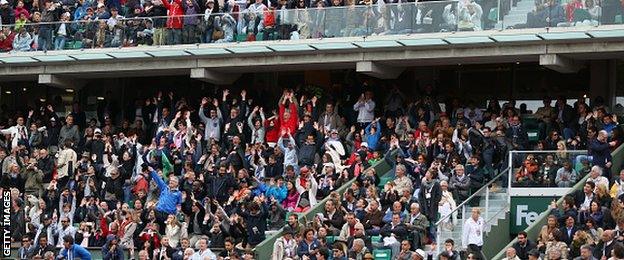
Arguably, for the first time Rafael Nadal will be going into a match on the world-famous clay-court as the underdog
The Serb has been on the charm offensive since arriving at Roland Garros, adding French to the long list of languages he can turn to in post-match interviews.
But arguably for the first time ever, Nadal will be going into a match on the most famous clay-court in the world as the underdog, so could he call upon an unlikely sympathy vote?
"Of course it's important, especially if I am on the quest to win this tournament," said Djokovic.
"One of the nicest moments I have experienced was here last year in the closing ceremony against Nadal when I lost and I received a very emotional applause in which, in my eyes, sounded like 'we respect your effort and we want you to come back next year and keep trying, keep trying to win the tournament.'"
The weather
"The hotter it is, the better it is for me."
Nadal was not playing any mind games when asked about the importance of conditions for Wednesday's match. A hot, sunny day gives the Spaniard's famous forehand even more zip, spin and bounce.
Djokovic, on the other hand, has endured some of his rare vulnerable moments in stifling conditions, most recently when he lost to Kei Nishikori in last year's US Open semi-finals.
"Last year, Djokovic was the clear favourite going into the final and suddenly the sun was shining, it was hot, and Nadal immediately becomes the favourite," said Wilander.
"After 10 minutes it looked like Djokovic realised this was not what he was hoping for.
"After he lost the first set it was pretty much one-way traffic for Nadal and he just blew Djokovic away."
And the forecast for Wednesday? Warm, dry and cloudy.
How Nadal can beat Djokovic |
|---|
1. Finish to the forehand: Nadal lost the opening set in 2014 overplaying the Serb's backhand, resulting in only four forehand winners. In set two, he finished with 85 % of forehand winners squarely directed at Djokovic's forehand side. |
2. First serves to the forehand: Djokovic has the world's best backhand return, and Nadal's lefty slice naturally goes there. When Nadal beat Djokovic in Monte Carlo 2012, Djokovic did not hit a single backhand return from a first serve. |
3. Run around forehands: Nadal's forehand must be the most dominant shot on the court for him to advance. In order to successfully achieve that, he must hit more forehands than backhands standing in the deuce (right-hand) court. |
4. Serve and forehand: Nadal loves to hit a forehand as the first shot after the serve. When Nadal beat Djokovic at the 2013 US Open, Nadal hit 78% forehands as the first shot after the serve, and at Monte Carlo 2012 it was 81%. |
5. Bold on break points: The toughest point in tennis to win in recent years is arguably break point on Nadal's serve. In the 2012 Rome final against Djokovic, Nadal faced six break points in the second set and saved them all. |
(ATP analyst Craig O'Shannessy) |
- Published2 June 2015
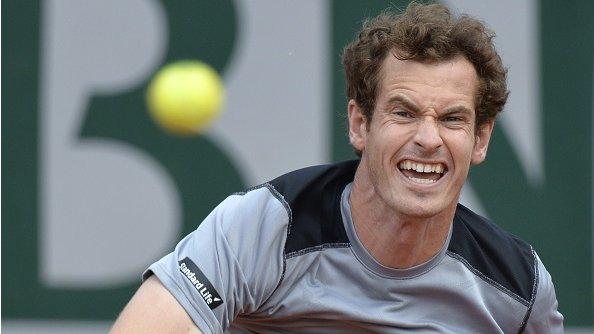
- Published26 May 2015
- Published2 June 2015
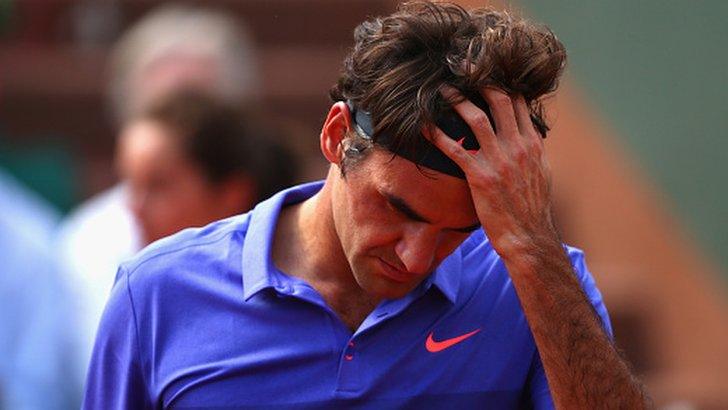
- Published1 June 2015
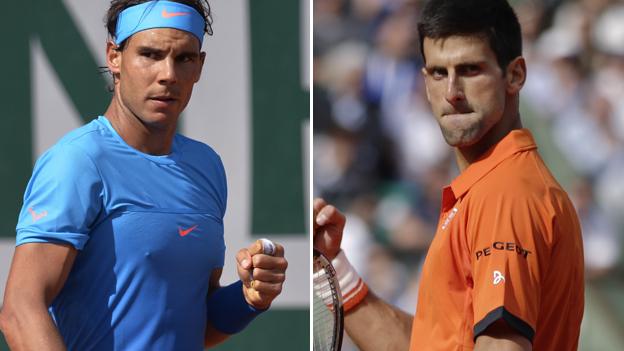
- Published2 June 2015
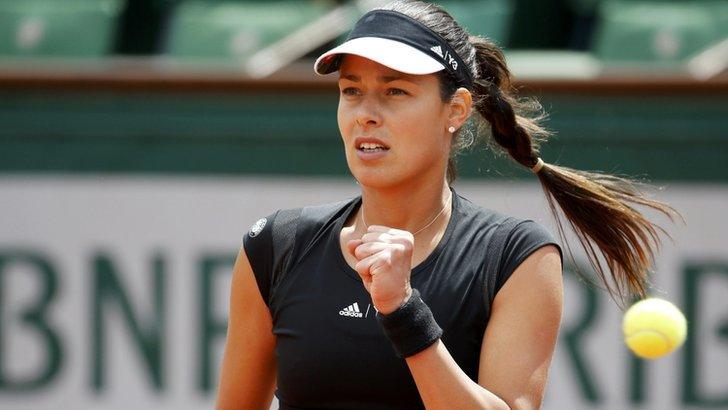
- Published8 November 2016
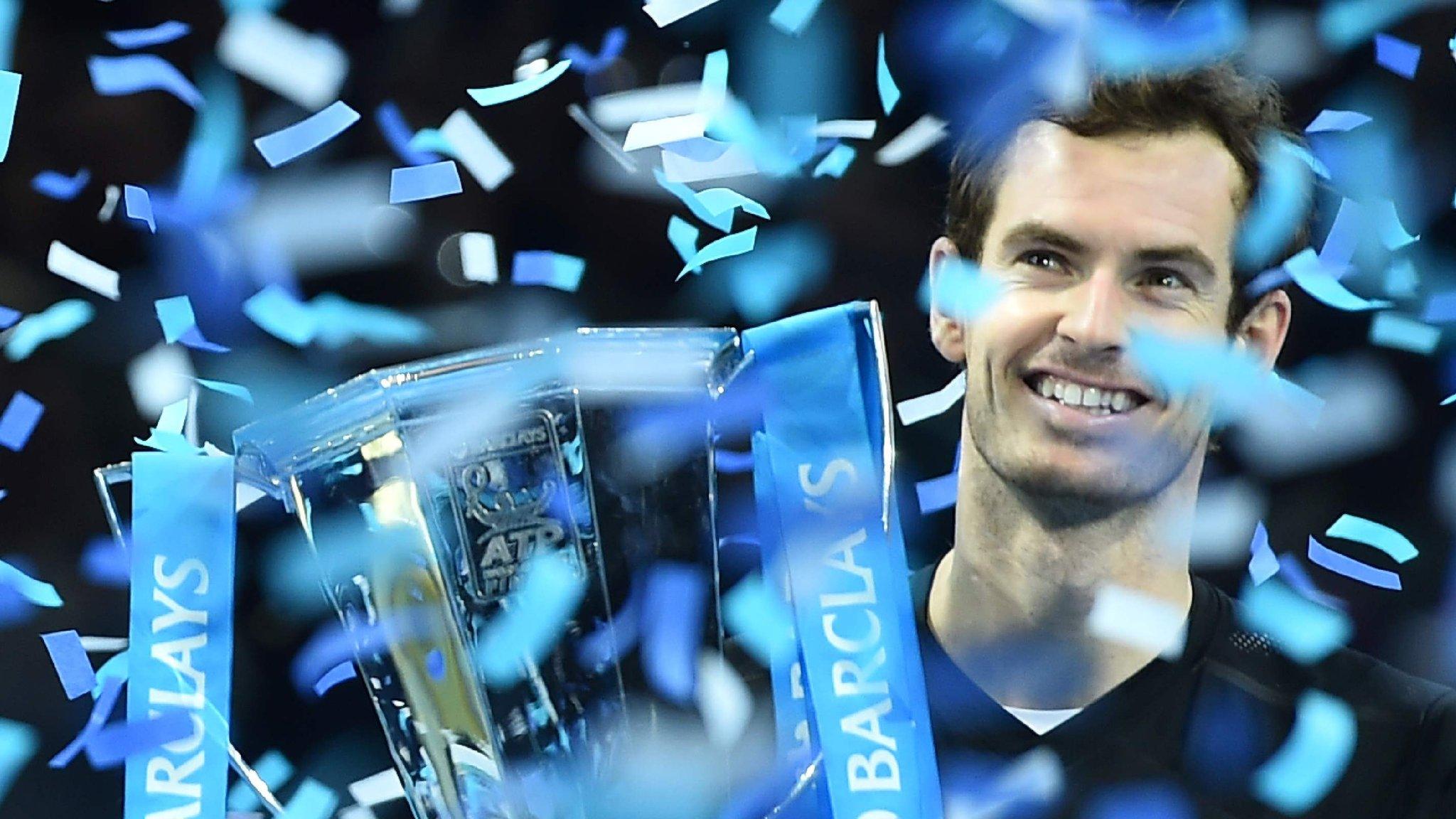
- Published9 November 2016
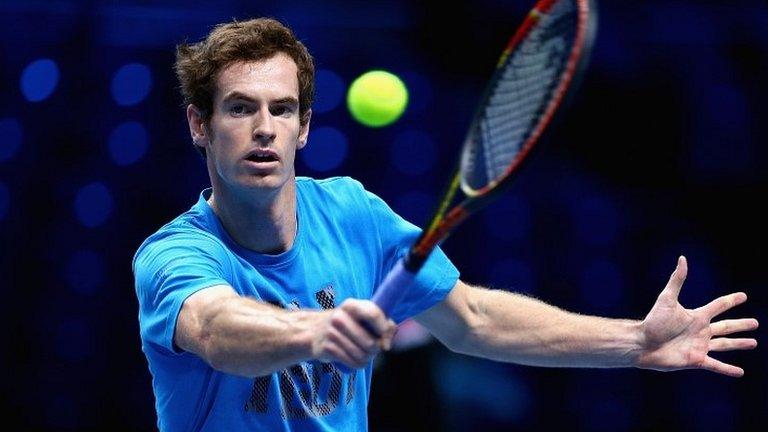
- Published17 June 2019
